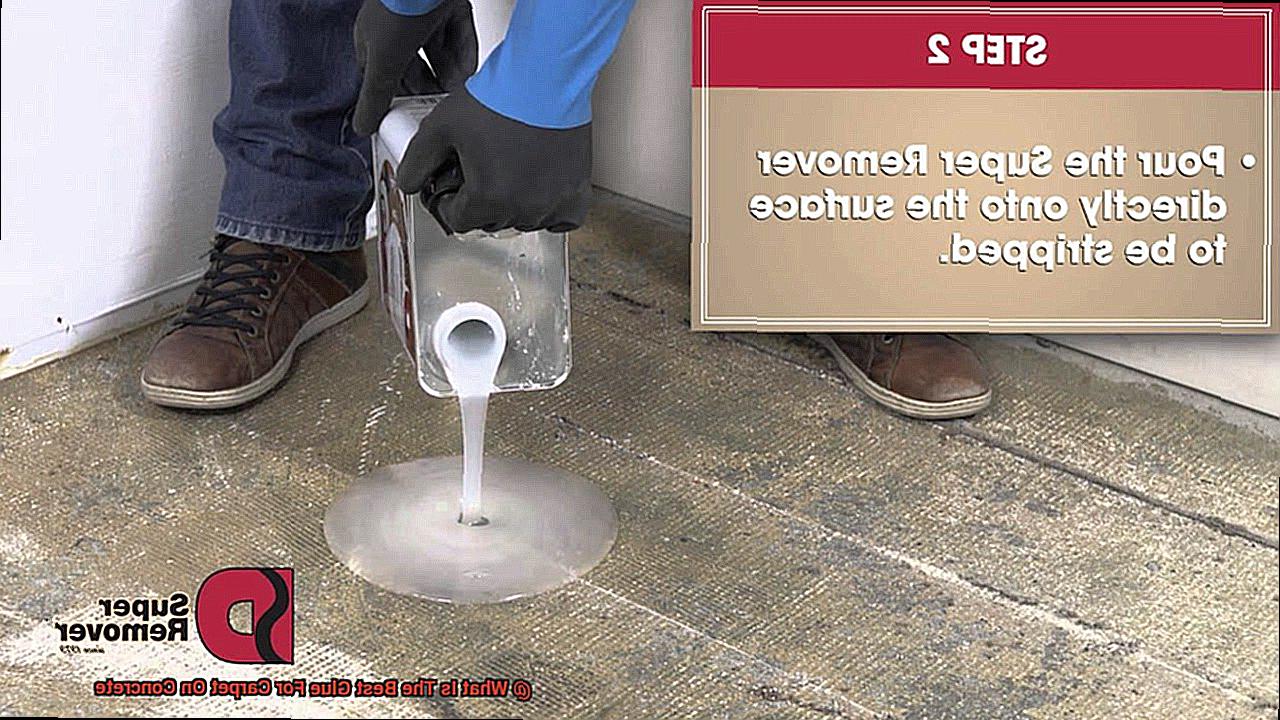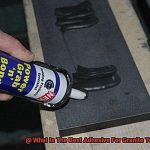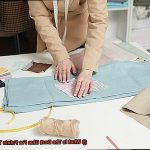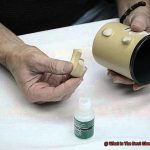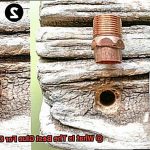Welcome to our blog post where we dive headfirst into the age-old question: “What is the best glue for carpet on concrete?”
Whether you’re a DIY dynamo ready to transform your living space or a seasoned pro in need of some expert advice, this guide has got your back. We all know that installing carpet on concrete can be a tricky business, what with moisture lurking beneath the surface and heavy foot traffic threatening to make a mess of things.
But fear not. In this comprehensive article, we’ll explore a myriad of glues specifically formulated for bonding carpet to concrete surfaces.
So, grab a cuppa, settle in, and let’s get down to the nitty-gritty of gluing carpets like pros.
Types of Glue for Carpet on Concrete
Contents
- 1 Types of Glue for Carpet on Concrete
- 2 Factors to Consider When Choosing the Best Glue
- 3 Proper Surface Preparation Before Applying Adhesive
- 4 Professional Advice and Guidance
- 5 Pressure Sensitive Adhesive (PSA)
- 6 Solvent-Based Adhesive
- 7 Water-Based Adhesives
- 8 Proper Installation Techniques and Drying Time
- 9 Conclusion
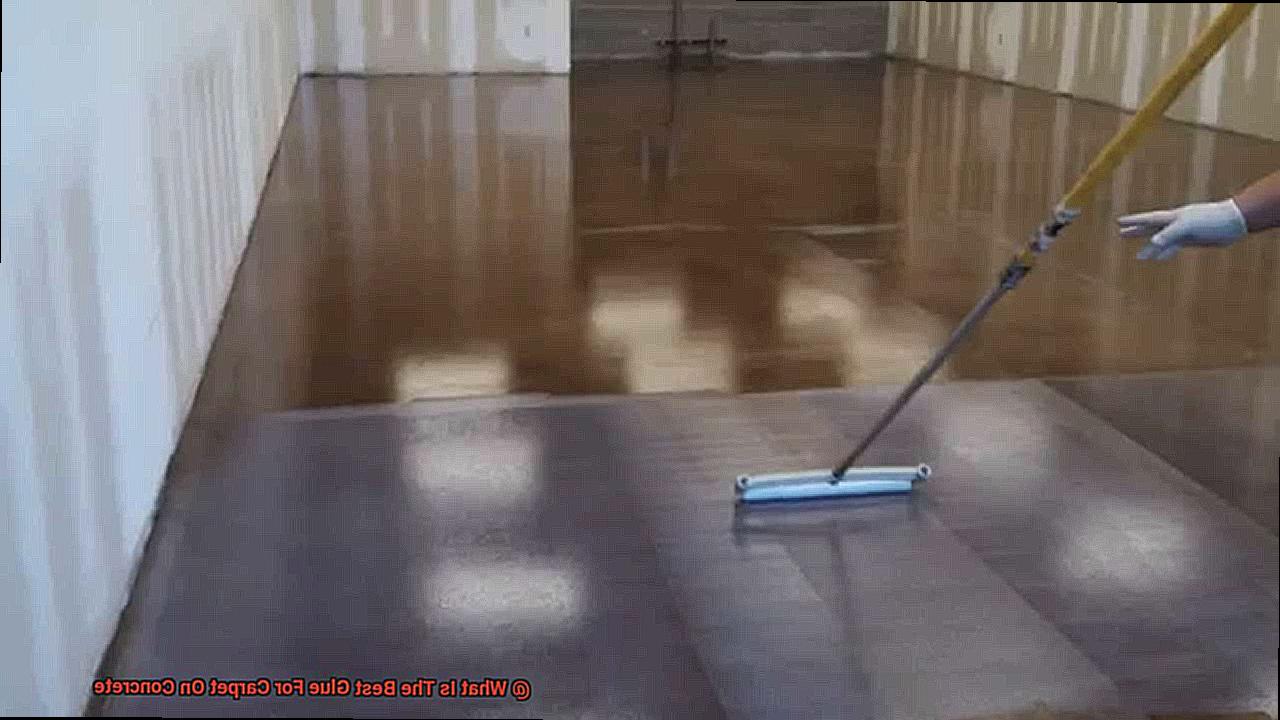
Installing carpet on concrete requires the right adhesive to ensure a secure and durable bond. With various glue options available, choosing the best one for your project can be overwhelming. In this essay, we will delve into the different types of glue commonly used for carpet installation on concrete and provide valuable insights to help you make an informed decision.
Pressure-sensitive adhesive (PSA):
One of the most favored choices for carpet installation on concrete is pressure-sensitive adhesive. This versatile glue remains tacky even after drying, allowing for easy repositioning during installation. PSA forms a strong bond under pressure and displays excellent resistance to moisture. It is ideal for areas with moderate foot traffic and where occasional carpet replacement may be necessary.
Solvent-based adhesive:
Known for its quick drying time and high bond strength, solvent-based adhesive is suitable for heavy traffic areas. It offers exceptional durability and long-lasting performance. However, these adhesives emit strong odors during application, requiring proper ventilation and caution. Ideal for well-ventilated spaces, solvent-based adhesives guarantee a robust bond.
Water-based adhesive:
Environmentally friendly and safe to use, water-based adhesives are an excellent choice for carpet installation on concrete. These adhesives have low volatile organic compound (VOC) content, ensuring good indoor air quality. Water-based adhesives boast strong bonding properties and resistance to moisture. They are suitable for various carpet types, making them ideal for both residential and commercial applications.
Latex-based adhesive:
Latex-based adhesives are versatile and widely used due to their ability to form a strong bond between carpet and concrete surfaces. Available in both water-based and solvent-based forms, latex adhesives offer different drying times and bond strengths. No matter the variant, latex adhesives ensure that carpets remain firmly in place even under heavy foot traffic. Additionally, they are resistant to moisture, making them suitable for areas prone to spills or high humidity.
Epoxy adhesive:
When extreme durability is required, epoxy adhesives are the go-to option for carpet installation on concrete. These heavy-duty adhesives demonstrate exceptional bond strength and resistance to chemicals and temperature fluctuations. However, they can be challenging to work with due to a short working time and longer curing time. Epoxy adhesives are commonly utilized in industrial settings where resilience is paramount.
Selecting the right glue for carpet installation on concrete is crucial for a successful project. Factors such as foot traffic, moisture exposure, and carpet manufacturer recommendations should be considered when making your decision.
Pressure-sensitive adhesive, solvent-based adhesive, water-based adhesive, latex-based adhesive, and epoxy adhesive are some of the common options available.
Factors to Consider When Choosing the Best Glue
When it comes to choosing the best glue for carpet on concrete, there are several factors that you should consider. Let’s dive into the world of adhesives and discuss what makes a glue the right choice for your project.
- Adhesive Strength: The most important factor to consider is the adhesive strength. You want a glue that can securely bond the carpet fibers to the concrete surface. Look for adhesives that are specifically designed for carpet installation on concrete, as they are formulated to provide a strong and durable bond.
- Compatibility: Different types of carpets may require different adhesives, so it’s crucial to check the manufacturer’s recommendations or consult with a professional to determine what works best for your specific carpet material and concrete surface. Ensure that the glue you choose is compatible with both the carpet and the concrete.
- Moisture Resistance: Moisture can wreak havoc on your carpet installation, so choose a glue that has moisture-resistant properties. This will ensure that your adhesive maintains its integrity even in damp conditions, preventing any damage or loosening of the carpet. Consider areas prone to moisture or where water seepage is possible.
- VOC Content: Volatile Organic Compounds (VOCs) are chemicals found in many adhesives that can be harmful to human health and the environment. Opt for low VOC or zero VOC options to ensure a safer and healthier indoor environment. Protect yourself and the environment by choosing adhesives with minimal VOC content.
- Ease of Application: Look for a glue that is easy to work with and spreads evenly over the surface. Some adhesives may offer extended open time, which allows you to make adjustments and ensure proper alignment of the carpet before setting. An easy-to-use glue will make your installation process smoother and more efficient.
- Drying Time: Quick-drying adhesives can significantly reduce installation time and inconvenience. However, keep in mind that fast-drying adhesives may have a shorter open time, requiring quicker installation. Consider your project timeline and choose a glue that aligns with your needs.
- Environmental Impact: Choose a glue that is environmentally friendly and sustainable. Water-based or natural ingredient-based adhesives are not only better for the environment but also safer to use. Reduce your carbon footprint by selecting an adhesive that prioritizes sustainability.
- Manufacturer’s Recommendations: Always refer to the manufacturer’s recommendations for the specific carpet and concrete surface you are working with. They will provide detailed instructions on the type of glue that is recommended for optimal performance and longevity. Following their guidance ensures the best outcome for your project.
Proper Surface Preparation Before Applying Adhesive
Proper surface preparation is the key to a successful and long-lasting adhesive application. Whether you’re installing carpet on a concrete floor or bonding materials together, taking the time to prepare the surface will ensure that the adhesive bonds effectively and securely.
First and foremost, cleanliness is paramount. Imagine trying to stick something onto a dirty surface – it just won’t hold. So, start by sweeping away any loose dirt, dust, or debris. Then, get down on your hands and knees and give the surface a thorough wash with a mild detergent and warm water. Don’t forget to scrub away those pesky stains and residues with a stiff brush. Rinse the area well and let it dry completely. A clean surface provides the perfect foundation for the adhesive to do its magic.
Next, assess the condition of the surface. Are there any cracks, unevenness, or rough patches? These imperfections can disrupt the adhesive bond and compromise its strength. If you spot any small cracks, fill them up using a concrete patching compound. For larger cracks, it’s best to call in the professionals. Smooth out any high spots or uneven areas using a floor grinder or sander. This ensures that your adhesive will have a flat and even surface to adhere to.
Moisture is another enemy of adhesive bonding. Excessive moisture can cause the adhesive to fail and lead to damage over time. To test for moisture, you can use a moisture meter or conduct a plastic sheet test. These methods will help determine if additional measures, such as sealing the surface or using a moisture barrier, are necessary before applying the adhesive.
Finally, it’s time to apply the adhesive. Follow the manufacturer’s instructions carefully, as different adhesives may have specific requirements. Whether you’re using a trowel or roller, make sure to apply an even layer of adhesive, covering the entire surface area. Working in small sections prevents the adhesive from drying out before you can lay down your materials.
Professional Advice and Guidance
Don’t worry, we’ve got you covered. In this comprehensive guide, we will provide you with professional advice and guidance to help you find the best glue for your carpet installation needs. From selecting the right adhesive to preparing the concrete surface, follow these expert tips to ensure a secure and long-lasting bond.
Choosing the Right Adhesive:
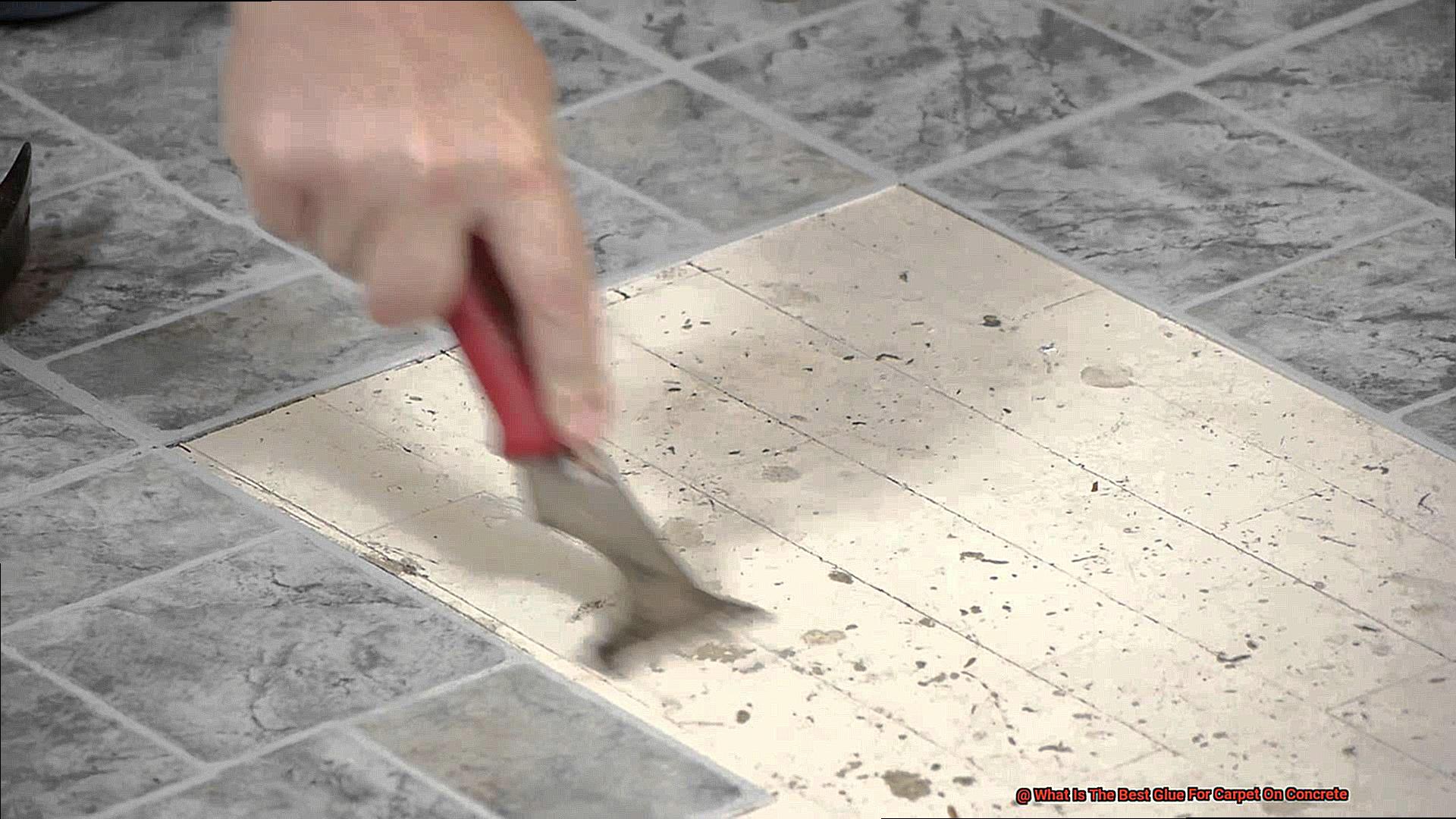
To create a strong and durable bond between your carpet and concrete, it is crucial to select an adhesive specifically designed for carpet installation on concrete. These specialized adhesives offer superior bonding strength, durability, and resistance to moisture and humidity. Say no to general-purpose adhesives that may lead to delamination or loose carpet over time.
Consider the Type of Carpet:
Different carpets have different backing materials, so it’s important to choose an adhesive that suits your specific carpet type. Latex-based adhesives work well with most carpets, while solvent-based adhesives are recommended for carpets with polypropylene backing. Matching the right adhesive with your carpet’s backing material ensures a compatible and long-lasting bond.
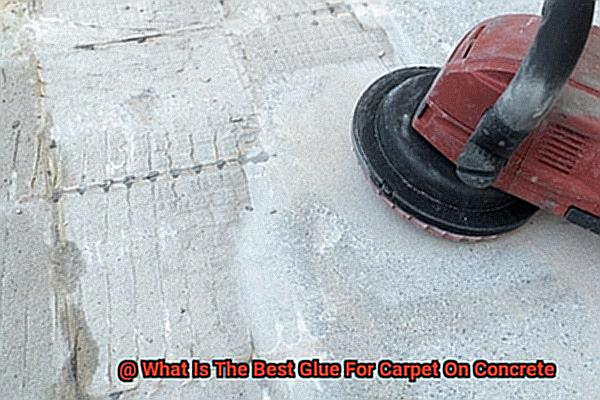
Preparing the Concrete Surface:
Just as a strong foundation is essential for stability, preparing the concrete surface is crucial for a secure bond between the carpet and the floor. Thoroughly clean the concrete surface, removing any dust, grease, or debris that could hinder proper adhesion. Address cracks or unevenness by filling them in or leveling the surface with suitable repair materials.
Applying the Adhesive:
Follow the manufacturer’s instructions carefully when applying the adhesive. Use a trowel with the correct notch size for even coverage and prevent any areas from being missed or overloaded with glue. Remember, a balanced application ensures optimal bonding strength between the carpet and concrete.
Allowing Ample Drying Time:
Patience is key. Allow sufficient drying time for the adhesive before moving or placing furniture on the newly installed carpet. This prevents shifting or damage and guarantees a secure bond that will stand the test of time.
Pressure Sensitive Adhesive (PSA)
If you’re planning to install carpet on a concrete surface, you need a reliable adhesive that will provide a strong bond and easy installation. Look no further than Pressure Sensitive Adhesive (PSA). This versatile glue is specifically designed for carpet installations on concrete surfaces and offers numerous advantages.
First and foremost, PSA is incredibly easy to use. Unlike other adhesives that require mixing or curing time, PSA can be applied immediately. All you have to do is remove the release liner and apply the adhesive directly onto the concrete surface. This makes for a quick and efficient installation, perfect for both residential and commercial projects where time is of the essence.
But ease of use is not the only benefit of using PSA. It also forms a strong and durable bond between the carpet and concrete. Its pressure-sensitive nature ensures that it adheres well to both surfaces, providing a secure hold. This is especially important in high-traffic areas where the carpet may be subjected to heavy foot traffic or other stresses.
Another great feature of PSA is its flexibility. If you need to reposition the carpet during installation, no problem. PSA allows for easy adjustments to ensure proper alignment and fit. And if you ever need to replace or remove the carpet in the future, PSA can be peeled off without leaving behind any residue or causing damage to the concrete surface.
When selecting a PSA for carpet on concrete, it’s important to choose one specifically designed for this purpose. These adhesives are formulated to provide optimal performance in terms of bonding strength, durability, and compatibility with both the carpet and concrete surfaces.
Solvent-Based Adhesive
Carpet installation on concrete demands the perfect adhesive for a lasting bond. Among the array of options available, solvent-based adhesive stands out with its unique advantages and disadvantages. In this comprehensive exploration, we’ll delve into the pros and cons of utilizing solvent-based adhesive, equipping you with the knowledge needed to make an informed choice.
Pros:
- Instant Bonding: With solvent-based adhesive, witness the magic of an almost instantaneous, robust connection between the carpet and concrete. This attribute makes it an ideal choice for time-sensitive projects or rapid installations.
- Moisture Resistance: Concrete surfaces often grapple with moisture-related challenges, but fear not. Solvent-based adhesive is specifically formulated to withstand high moisture levels without compromising its strength or integrity. Consequently, it emerges as an impeccable solution for basements or areas susceptible to water leakage.
- Versatility Unleashed: Solvent-based adhesive is a true chameleon, seamlessly adapting to various carpet types. Whether you’re working with loop pile, cut pile, or berber carpets, this adhesive showcases its versatility by forging powerful bonds with all these materials. Embrace the freedom to employ it across a wide range of carpeting projects.
Cons:
- Unyielding Odor: Brace yourself for the potent aroma that often accompanies solvent-based adhesives due to the solvents integrated into their composition. This fragrance may be unpleasant and linger for some time after installation.
- Health Hazards: The solvents present in solvent-based adhesives emit volatile organic compounds (VOCs), which can pose health risks when inhaled excessively or over an extended period. Prioritize safety by using these adhesives in well-ventilated spaces and taking appropriate precautions such as donning masks and gloves.
- Cleanup Conundrums: Unlike their pressure-sensitive counterparts, solvent-based adhesives prove to be stubborn and resistant to removal once they have cured. Consequently, replacing or repairing carpets becomes a more challenging and time-consuming endeavor.
Water-Based Adhesives
Water-based adhesives are the superheroes of the adhesive world, swooping in to save the day when it comes to installing carpets on concrete surfaces. These adhesives have soared in popularity, thanks to their impressive array of benefits. Let’s dive into the world of water-based adhesives and uncover why they are the ultimate choice for carpet installation on concrete.
First and foremost, water-based adhesives are eco-warriors, fighting against harmful chemicals and toxic fumes. With their low volatile organic compound (VOC) emissions, these adhesives are as green as a lush forest. Say goodbye to noxious odors that can leave you gasping for fresh air. Water-based adhesives create a healthy indoor environment, especially in spaces with poor ventilation. So, feel free to take a deep breath of relief knowing that you’re not only securing your carpet but also preserving the planet.
Ease of use and cleanup make water-based adhesives the true champions of convenience. Unlike their solvent-based counterparts, which demand harsh chemicals for cleanup, water-based adhesives require nothing more than a splash of water. No need to arm yourself with toxic substances or wrestle with sticky residues. With water-based adhesives, your installation and maintenance journey becomes a smooth cruise down Easy Street.
Don’t be fooled by their watery nature – water-based adhesives possess Herculean strength and durability. These adhesive warriors are specially formulated to forge an unbreakable bond between your carpet and the concrete surface. Rest assured that your carpet will remain steadfastly in place for years to come, withstanding the heaviest foot traffic and wildest adventures.
Before unleashing the power of water-based adhesives, prepare your battleground wisely. Ensure that the concrete surface is pristine and dry before applying the adhesive. This crucial step sets the stage for a superhero-level bond between your carpet and the concrete. And remember, every great superhero adheres to the manufacturer’s instructions regarding application techniques, open time, and drying time. It’s the secret to unlocking their full potential and achieving mind-blowing results.
In the realm of water-based adhesives, there are legendary brands that professionals trust. Roberts 6700, Henry 356C MultiPro, and Bostik UltraGrip 4V reign supreme, offering reliability and performance that can withstand any challenge.
Proper Installation Techniques and Drying Time
Today, we embark on an exciting journey into the world of glues, unraveling the secrets to a flawless carpet installation on concrete. So grab your trusty tool belt and let’s dive right in.
The Foundation for Success – Proper Surface Preparation
The key to a strong bond lies in the foundation. Before applying any glue, it is crucial to prepare the concrete surface diligently. Here’s how:
- Cleanliness is next to adhesion: Rid the surface of dirt, dust, and debris that could sabotage the glue’s grip.
- Smooth as silk: Repair any cracks or uneven areas to create a pristine canvas for the carpet.
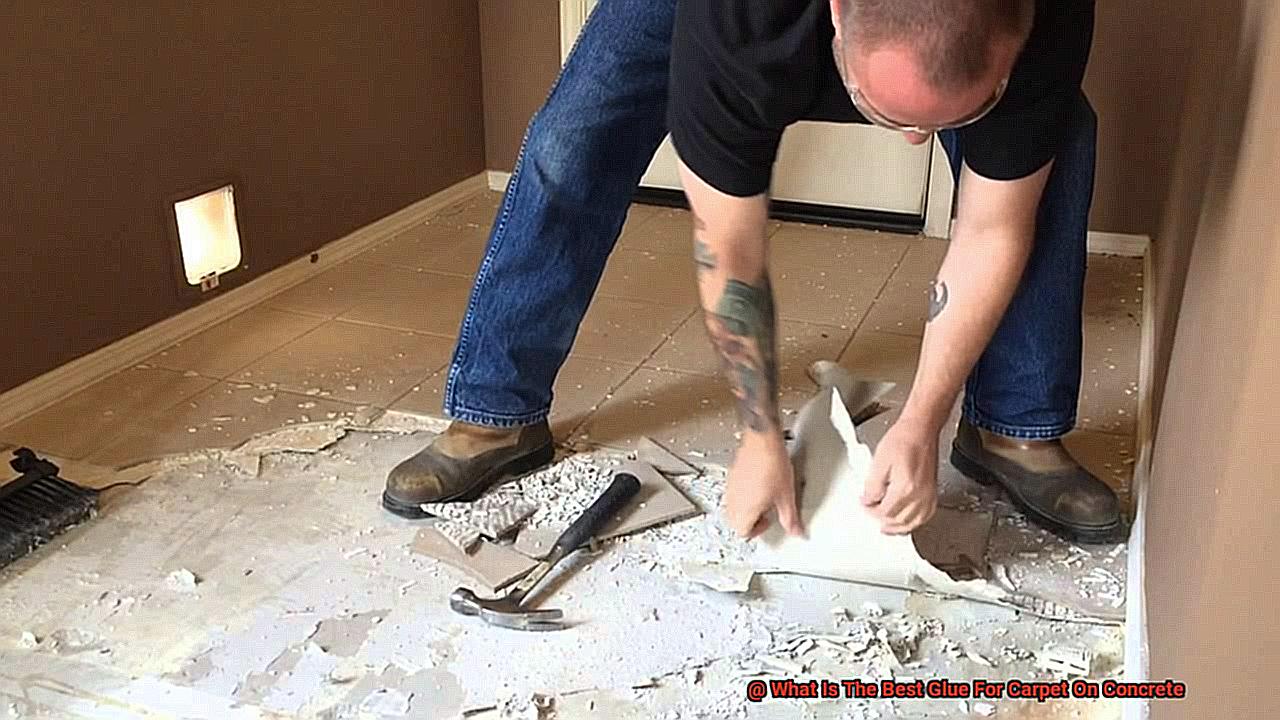
Choosing the Perfect Adhesive
Not all glues are created equal. To find the ideal adhesive for your carpet installation on concrete, consider the following:
- Unleash your inner researcher: Explore different adhesive options suitable for concrete surfaces.
- Factors that matter: Assess durability, ease of use, and eco-friendliness when making your selection.
- Stick to instructions: Follow the manufacturer’s guidance, using the recommended trowel size and technique for a smooth and even application.
Patience is a Virtue – The Significance of Drying Time
Rushing perfection is never a good idea. Allow sufficient drying time for a secure bond. Here’s what you need to know:
- Respect the clock: Consult the manufacturer’s instructions for the recommended drying time.
- The variables at play: Factors like humidity, temperature, and adhesive type can influence drying time.
Let it Breathe. The Importance of Ventilation
Give your glue some room to breathe. Adequate ventilation is crucial during the drying process. Here’s how to ensure proper airflow:

- Air that flows: Promote proper air circulation by opening windows or using fans.
- Light as a feather: Avoid walking on or placing heavy objects on the glued area until it is fully dried.
VDjAYP7MOQ8″ >
Also Read: How to Glue Carpet to Stairs?
Conclusion
When it comes to choosing the best glue for carpet on concrete, there are a few key factors to consider. The first and most important factor is the adhesive’s ability to bond securely to both the carpet and the concrete surface. This ensures that the carpet will stay in place even under heavy foot traffic.
Another important consideration is the adhesive’s durability. You want a glue that will withstand regular wear and tear without losing its grip. A strong and long-lasting adhesive will ensure that your carpet stays firmly attached to the concrete for years to come.
Additionally, it’s crucial to choose a glue that is specifically designed for carpet installation on concrete. These adhesives are formulated with special properties that make them ideal for this particular application.
One highly recommended option is a solvent-based adhesive. This type of glue provides excellent bonding strength and is resistant to moisture, which can be a common issue when installing carpet on concrete.
Furthermore, it’s worth noting that some adhesives may emit strong odors during installation. Therefore, selecting an adhesive with low VOC (volatile organic compounds) content can help create a healthier indoor environment.
In conclusion, finding the best glue for carpet on concrete requires careful consideration of factors such as bonding strength, durability, suitability for concrete surfaces, and low VOC content.

